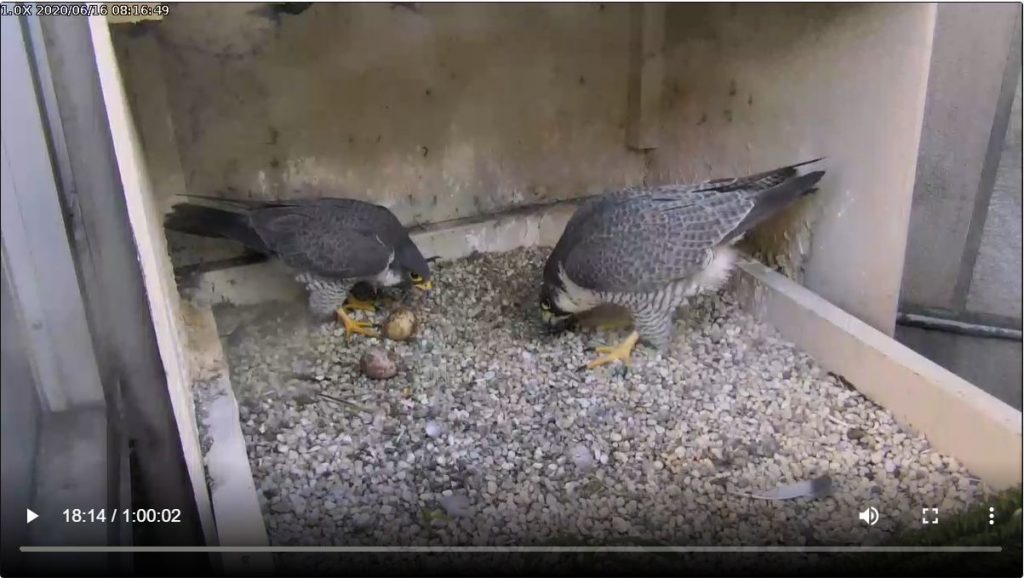
17 June 2020
When I reviewed yesterday’s time lapse video I saw Morela entice an unseen male to court with her at the Cathedral of Learning peregrine nest. She bowed with him in the 7 and 8 o’clock hours but she wasn’t with Terzo. Ecco is back!
In this Day-in-a-Minute video you can see both courtship sessions with Ecco, then Terzo at the nest alone at 10:30am. (Nothing else happened for the rest of the day.)
Morela and Ecco bowed at 7:08a in the video below.
In their second bowing session at 8:17a they nearly touched beaks, then Ecco checked the sky.
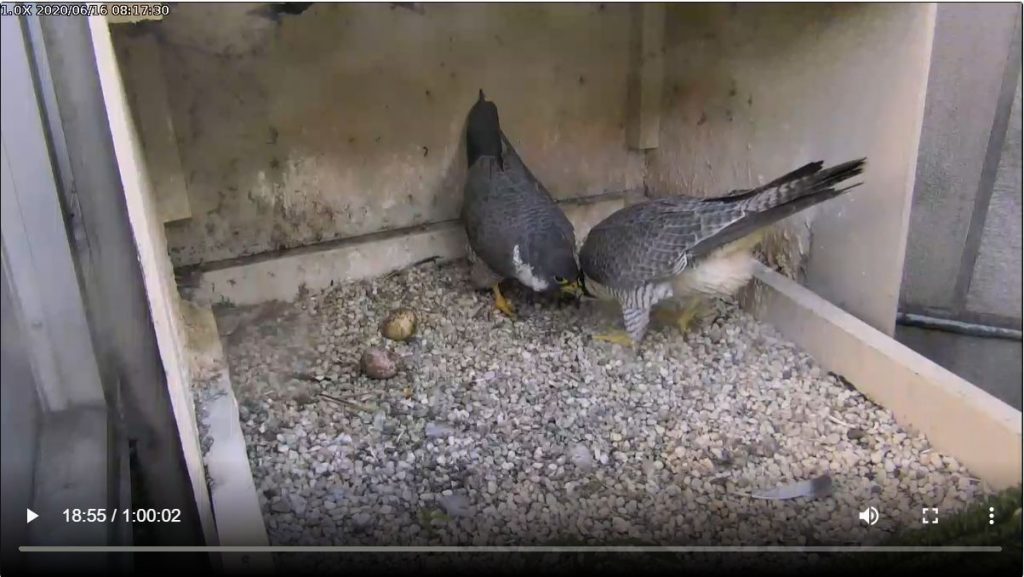
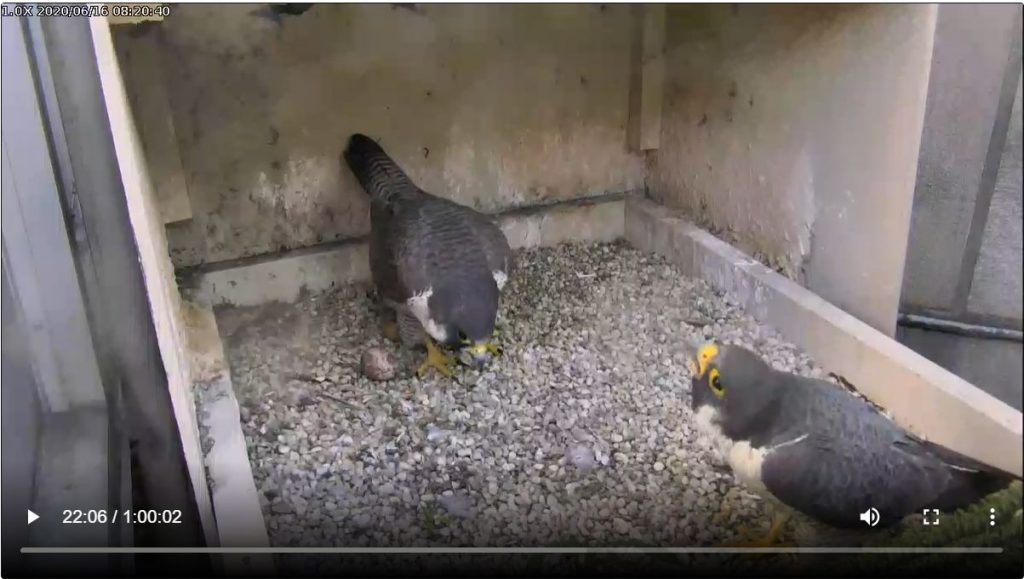
Terzo arrived two hours later and felt comfortable standing there, unthreatened, for 50 minutes.
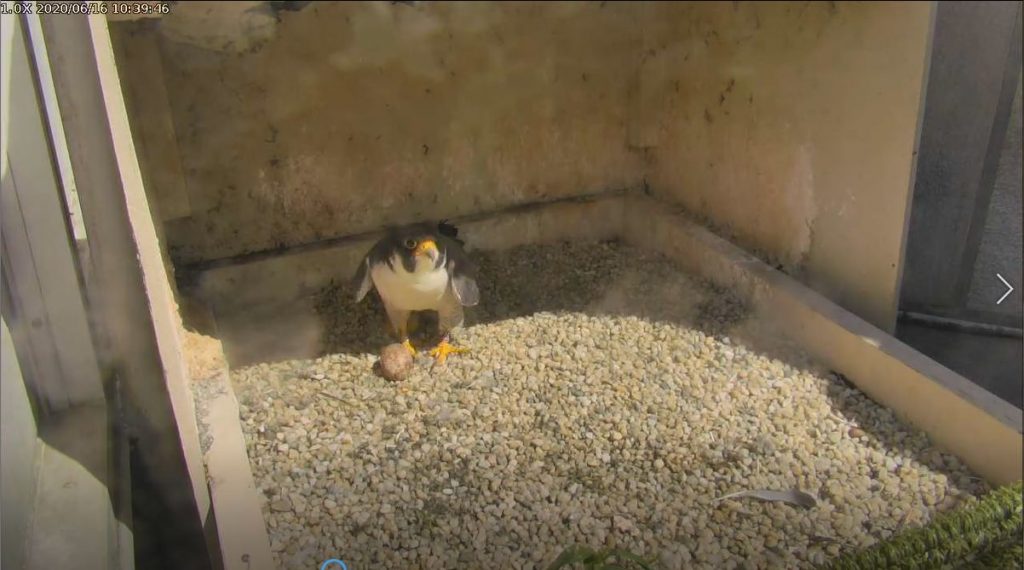
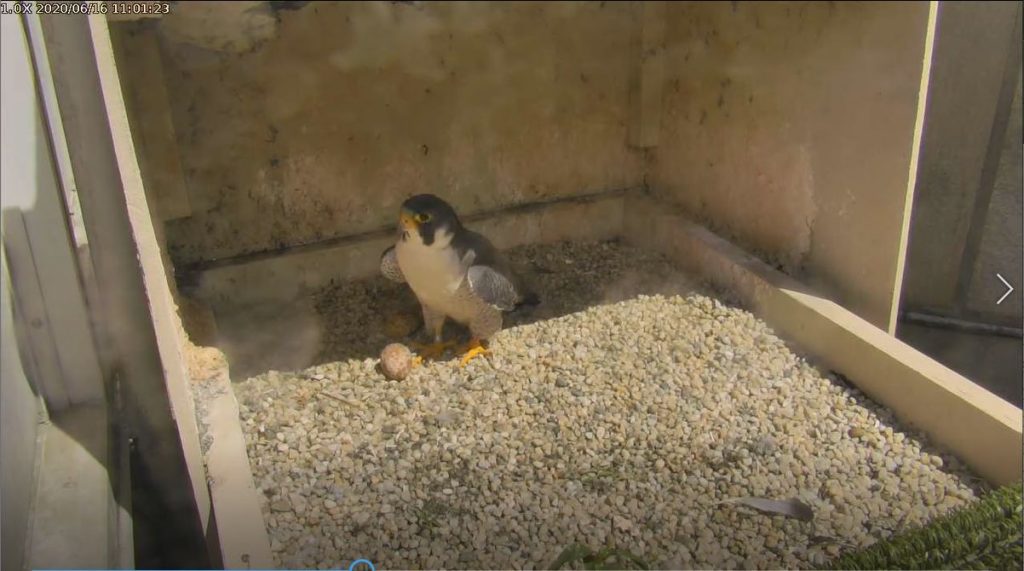
These two male peregrines still haven’t figured out who “owns” the Cathedral of Learning but at this point it doesn’t matter. It’s too late in the season to raise a family.
(photos and videos from the National Aviary falconcam at Univ of Pittsburgh)
What a saga!!!!
I really hope they work this out by next spring. We know she can lay eggs. I am in favor of Ecco. Terzo is too finicky
This is going to sound like a left-field kind of question, but is there any precedent for something similar to an open-relationship in peregrines like there is in humans? I mean, the impact of the open-relationship model was made apparent this year—no eggs—but, could we be witnessing something like that? And, as is the case with humans, I think, the outcome of an open-relationship is less offspring, maybe even none? I know, far out, but wondering…
Yirme, I don’t know an open relationship can occur among peregrines but this year’s behavior sure looks like it and the outcome is the same. Good suggestion.
I wonder who is the male peregrine downtown? I just remember Dot.ca two timing Beauty in Rochester and wonder if Ecco is part time at Pitt and part time somewhere else?
Robin, two-timing is extremely unusual & is probably not happening but I don’t think we’ll ever prove it. Neither male is banded (for positive ID) and we cannot prove there’s only one male by an absence at one nest because there are so many other places a male could go within his own territory. To figure out if it’s happening would require highly coordinated observations during the months of April and May 2021 plus an extraordinary amount of luck. “Highly coordinated observations” would require 2+ observers Downtown ALL THE TIME making sure that Dori’s mate is present –plus– at least 1 observer ALL THE TIME of the Pitt falconcam making sure that Ecco is present. “Extraordinary luck” means seeing a male Downtown at the same time that Ecco is at the Pitt nest. That would prove there are two males. As I said above, the inverse (only one male) cannot be proven. In Rochester, they had a banded male (Dot.ca) + only one male at both sites (Terzo makes a difference at Pitt) + cameras + lots of observers.